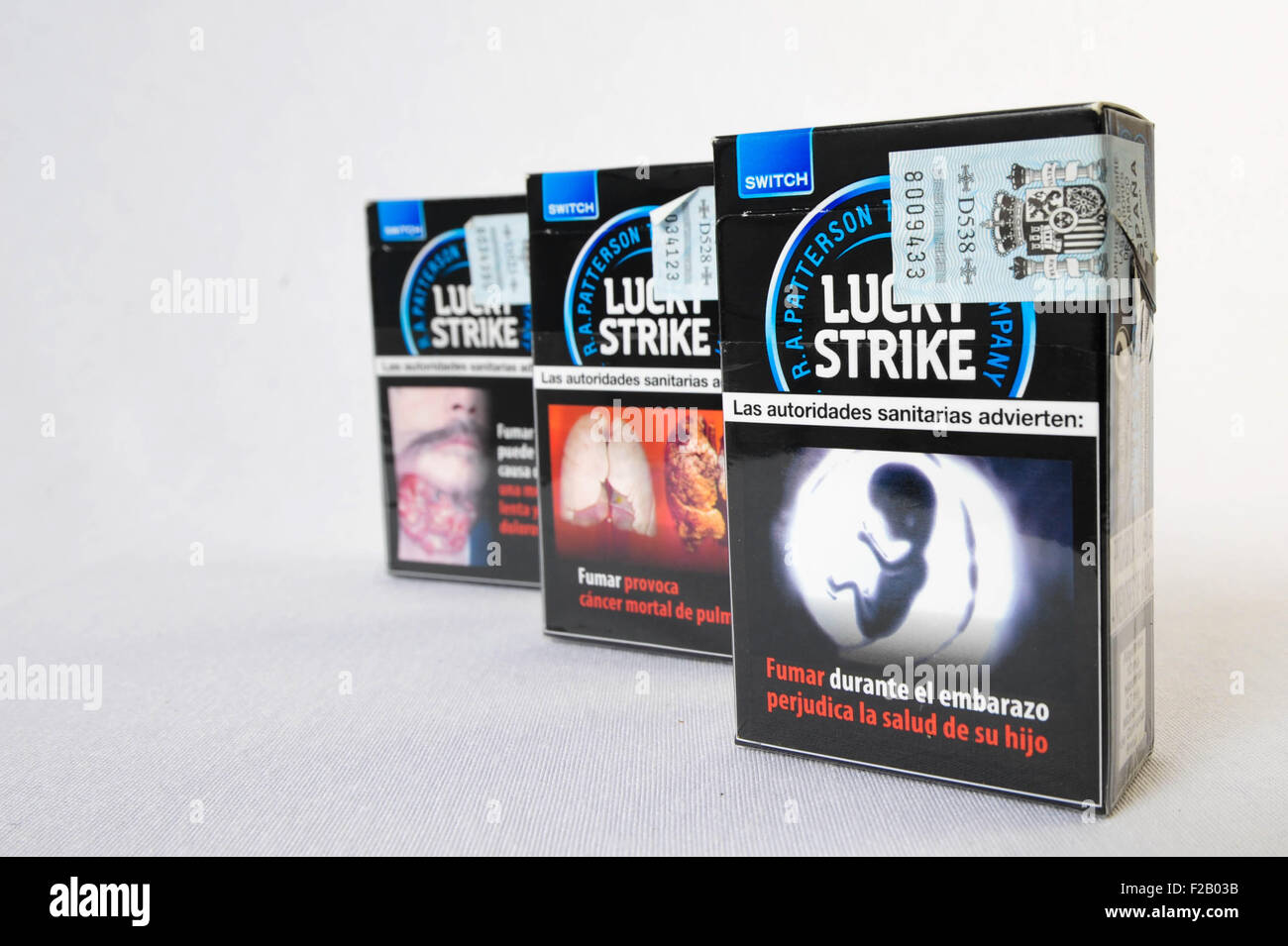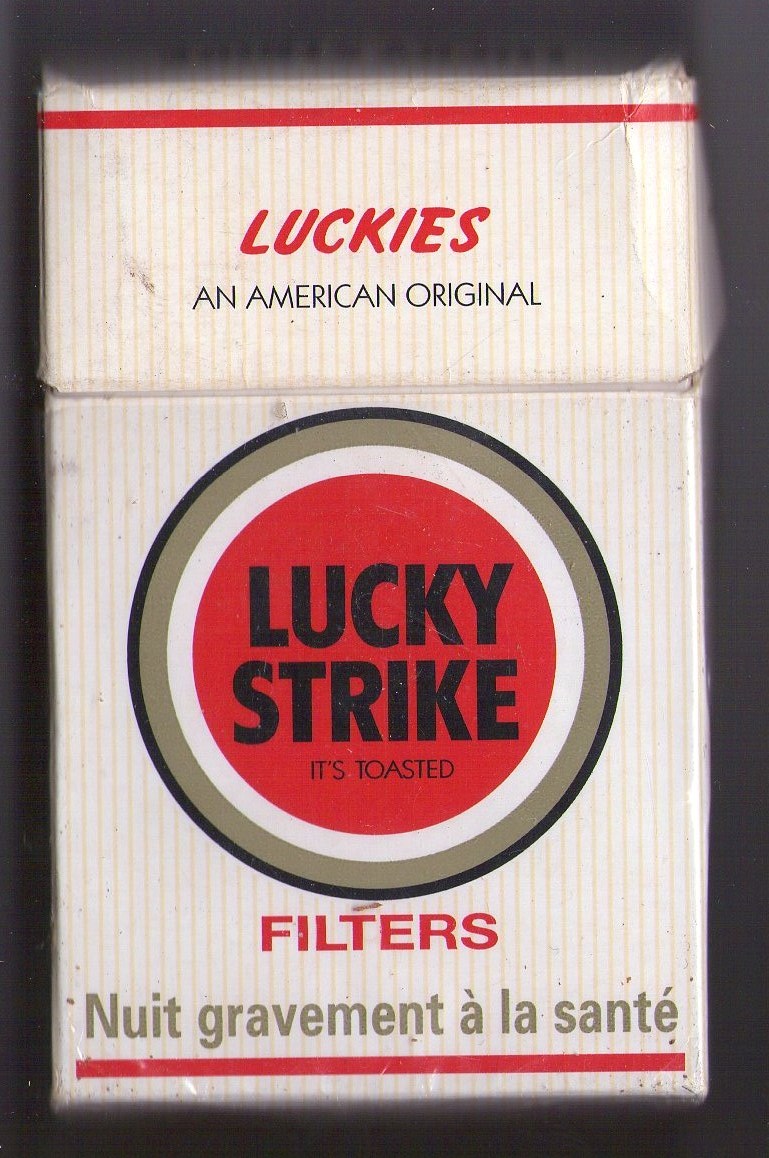

But the company worked to make it desirable for women.ĭuring World War Two, the green and red package changed to white and red because, it was claimed, the green pigment was needed for war purposes. The Lucky Strike brand, however, was unfashionable because its green package clashed with the fashions of the day. In the late 20s and early 30s, women began smoking in greater numbers. They are: Professor JG McVie (UK), Dr AK Kubik (Czech Republic), Dr P Bjucher (France), Professor I Plesko (Slovakia), Professor LJ Denis (Belgium), Professor H Senn (Switzerland), Professor H Zur Hausen (Germany), Professor H Hansen (Denmark), Professor U Veronesi (Italy), Dr K Bjartveit (Norway), Mr S Woodward (Australia), Dr V Tkeshelashvili (Georgia), Mr B De Blij (Netherlands), Professor M Dicato (Luxembourg), Professor S Eckhardt (Hungary), Mr T Hudson (Ireland), Dr J Mackay (Hong Kong), Professor Niu Shiuru (China), Dr I Tannock (Canada), Dr H Vertio (Finland), Dr Zakelj (Slovenia), Professor W Zatonski (Poland), Ms M Ziv (Israel), Mr M Pertschuk (USA), Dr Estevez (Argentina), Dr A Junquiera (Brazil), and Professor Abdrakhmanov (Kasakhstan).This work was conducted within the framework of support from the Italian Association for Cancer Research ( Associazone per la Ricerca sul Cancro).Lucky Strike cigarettes were originally sold in a green package. We thank the members of the International Cigarette Variation Group, who purchased and supplied the cigarettes at their own expense. NNK and NNN yields are highly correlated (correlation 0.88, 95% confidence interval 0.83 to 0.93), so only NNK is shown in the figure. Later they were developed into the cigarettes brand by R.A. There is a threefold difference between the lowest and highest yields of NNK for Camel, a fivefold difference for Lucky Strike, and ninefold for Marlboro (fig 1). Lucky Strike cigarettes were officially presented in 1871 being made of a new tobacco blend. Nicotine yield ranged from 0.85 mg/cig to 1.3 mg/cig for Camel and Lucky Strike, and 0.68 mg/cig to 1.25 mg/cig for Marlboro.ĭifferences in nitrosamine yields were substantial. Tar yield ranged from 10.6 mg/cig to 15.7 mg/cig for Camel, 11.8 mg/cig to 20.4 mg/cig for Lucky Strike, and 8.4 mg/cig to 15.9 mg/cig for Marlboro. Generally they conformed to the packet statement (where present). The results of the tar and nicotine testing were unremarkable. Our aim was to investigate international variation. This is not a representative sample-the cigarettes were acquired as they would be by the person in the street. Not all brands were available in each country and it is not known whether those purchased were locally produced, imported or smuggled, or how long they had been stored before sale. Forty cigarettes of each brand were analysed at the Institute of Carcinogenesis in Moscow. No “light”, “mild”, “menthol” or other variants were purchased. The cigarettes were purchased in 29 countries by volunteers (the International Cigarette Variation Group), who purchased the premium example available, which were, in most cases, filtered.

The methods used have been described by Hoffmann. The former is a powerful lung adenocarcinogen, regardless of route of administration, and the latter is an established oesophageal carcinogen in animals. We decided to test three global brands (Camel, Lucky Strike, and Marlboro) for consistency of tar and nicotine yields and for two tobacco specific nitrosamines, 4 - (methylnitrosamino) - 1 - (3-pyridyl) - 1 - butanone (NNK), and N-nitrosonornicotin (NNN).
Lucky strike cigarettes plus#
Further there has been an increase in adenocarcinoma relative to squamous carcinoma, more pronounced in women than men, and this may be caused by the increases in tobacco specific nitrosamines in cigarettes plus more intense (compensatory) smoking and deeper inhalation associated with modern cigarettes. Some early reports concluded, plausibly, that a decrease in lung cancer mortality could be ascribed to smoking reduced tar cigarettes, although more recent data 2 suggest that there is little if any difference in the long term outcome of smoking “low tar” as against “regular” cigarettes. In 1981 a US public health report concluded: “the preponderance of scientific evidence strongly suggests that the lower the “tar” and nicotine content of the cigarette, the less harmful would be the effect.” 1 These figures have been used to justify terms such as “light” and “mild” in descriptive advertising. Tar and nicotine yields of cigarettes have progressively, but not universally, appeared on cigarette packets and advertising since 1967.

Editor,-While the content of food, pharmaceutical products, drugs, and many other consumer goods are tightly regulated by governments, tobacco products, surprisingly, are not.


 0 kommentar(er)
0 kommentar(er)
